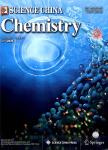Size-dependent hydroxyl radicals generation induced by SiO_2 ultra-fine particles: The role of surface iron
Size-dependent hydroxyl radicals generation induced by SiO_2 ultra-fine particles: The role of surface iron作者机构:College of Environmental Sciences and Engineering Peking University Beijing China Chinese Academy of Meteorological Sciences Beijing China Institute of Chemistry Chinese Academy of Sciences Beijing China
出 版 物:《Science China Chemistry》 (中国科学(化学英文版))
年 卷 期:2009年第52卷第7期
页 面:1033-1041页
核心收录:
学科分类:081704[工学-应用化学] 07[理学] 08[工学] 0817[工学-化学工程与技术] 0703[理学-化学] 070301[理学-无机化学]
基 金:Supported by the National Basic Research Priorities Program (Grant No. 2002CB410802) the National Natural Science Foundation of China (Grant No. 20637020)
主 题:ultra-fine particles nano-particles ·OH oxidative stress size-effect
摘 要:Oxidative stress and hydroxyl radicals (·OH) play important roles in adverse health effects caused by inhalable ambient air particles (PM10). The ultra-fine fraction of PM10 has been hypothesized as one of the critical contributors to ·OH generation. Both in vivo and in vitro studies have shown that ultra-fine particles (UFPs) or nano-particles generate more ·OH than larger particles with identical mass and composition. Both the surface area and surface-adsorbed redox-active metals have been suggested as factors to determine the oxidative capacity of UFPs. In this study, the ·OH-generating capability of dif-ferent sizes of SiO2 particles was investigated in order to determine which factor influences particle-induced ·OH generation. The amount of ·OH generated in both acellular and cellular systems was quantified using a capillary electrophoresis method following exposure to SiO2 particles with diameters of 14, 100, and 500 nm. The amount of ·OH was strongly dependent on particle size, and a significant enhancement was observed only with 14 nm particles. Further studies indicated a close association between ·OH and iron ion concentration (R2 = 0.812, p0.01). Washed particles, with their surface iron being removed, did not generate ·OH. The iron-containing leachate from these washings was able to enhance ·OH production as untreated particles did. Therefore, the presence of adsorbed iron on the surface of the SiO2 particles is presented as a possible mechanism of UPFs-induced ·OH generation. The SiO2 acted as an inert substrate, and the surface of ultra-fine SiO2 particles acted as a carrier for iron.



